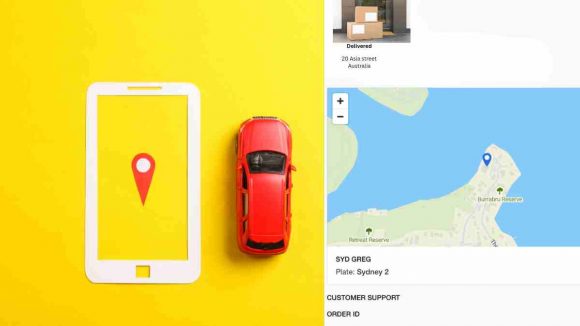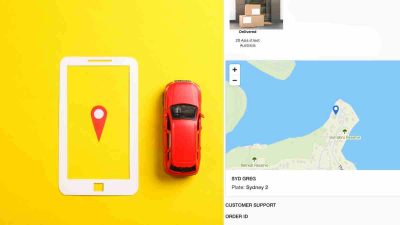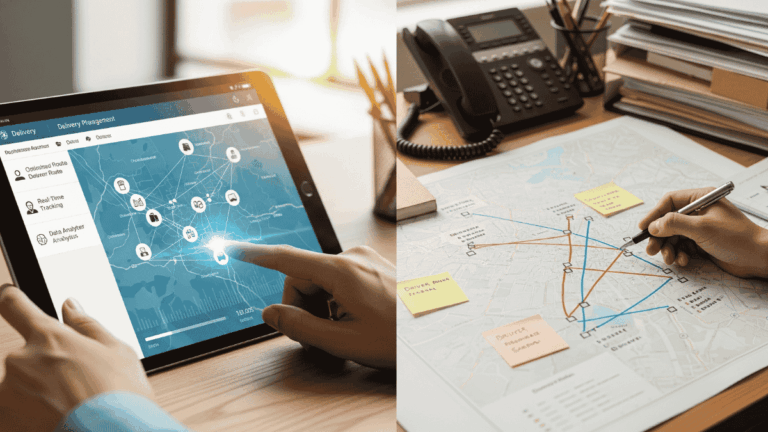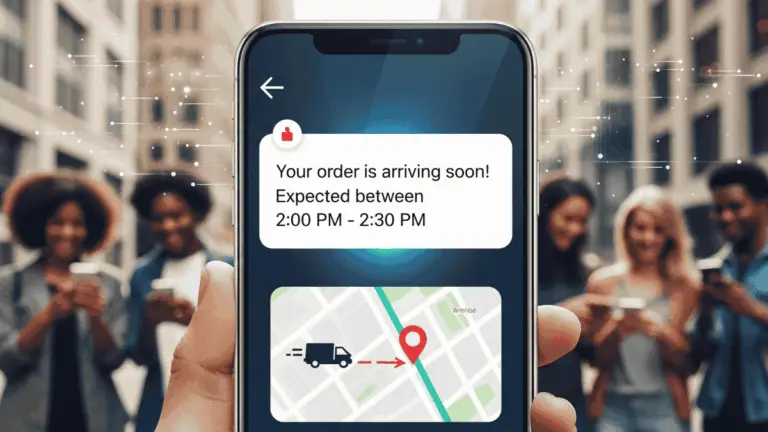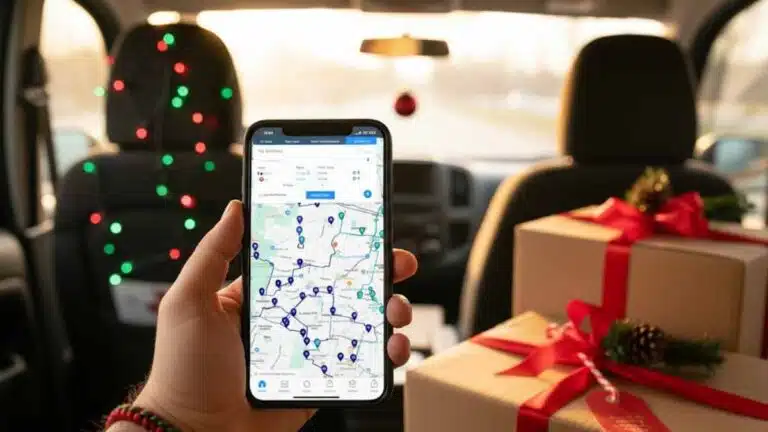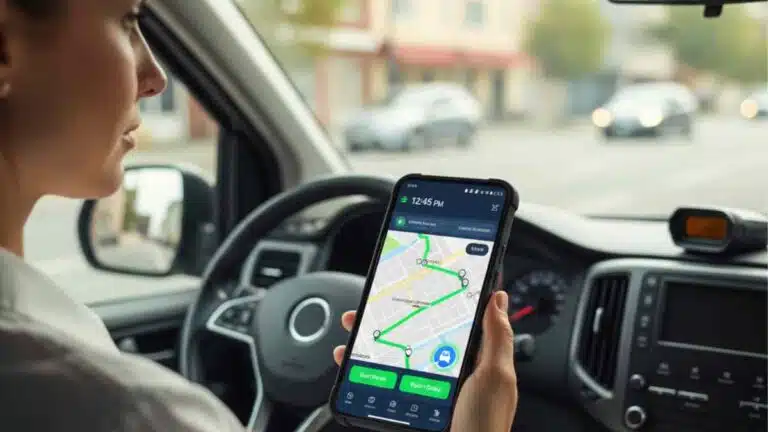If you’re planning routes the old-school way, it’s costing you more than you think. Without route optimization you just don’t see it until you compare the results side by side.
Every extra kilometre, idling, or a few minutes idling at a red light adds up fast. Route efficiency can only be effective when real-time traffic data is taken into consideration. The small inefficiencies eat into your fuel consumption.
Route optimization changes that story. It helps small businesses reduce operational costs, improve delivery time windows, and boost customer satisfaction — all without adding more drivers or requiring longer working hours.
And you don’t have to stay up late evenings manually planning routes to fight in the tight delivery windows you try to achieve.
Today’s technology does the important work for you, using traffic patterns, driver schedules, delivery capacity, and real-time traffic to create optimized routes. Real-time GPS tracking data, live tracking, and automation enable the planning of the smartest routes in seconds, matching customer expectations of fast delivery.
The result? Fewer delays, less fuel waste, and a delivery team that no longer uses inefficient routes, eliminating failed deliveries.
What Is Route Optimization
At its core, route optimization is about finding the most efficient, fastest, and cost-effective way to complete multiple stops.
It’s what helps drivers spend less time on the road, ensuring on-time deliveries. As a result, businesses spend less money on delivering packages to customers.
But these days, the software is far more sophisticated than it used to be. It now features route optimization algorithms, real-time GPS tracking data, and automation to calculate the optimal route.
The technology can predict when and where it will rain, allowing users to avoid certain areas and reduce their travel time.
It also takes into consideration the traffic, delivery windows, weather, driver availability, and even vehicle capacity. These performance metrics enhance efficiency while simultaneously reducing costs.
Compare that to old-school manual planning, where someone sits with a map or spreadsheet, trying to piece together the day’s runs. It’s time-consuming, you can easily make errors, and it’s impossible to adjust as things change.
Automated route optimization, on the other hand, updates in seconds. If a new order arrives or traffic slows down, the system instantly recalculates and sends updated directions directly to the driver’s route optimization app.
Can You Cut Costs With Route Optimization?
Route optimization gives instant results. So if you want to cut costs and see immediate results, the software won’t disappoint.
Every extra kilometre driven, minute spent idling, and every poorly sequenced stop adds up.
In one move, you can fix this by planning better with route optimization.
Here’s how it drives results:
- Fuel savings: By cutting unnecessary kilometres, you use less fuel and spend less per delivery. Businesses using route optimization software often see a decrease in fuel costs of up to 20%.
- Driver efficiency: When routes are well-planned, drivers can complete more stops per hour with fewer delays, resulting in higher output without requiring longer working hours.
- Reduced overtime: Balanced routes keep schedules tight and predictable. Fewer detours and last-minute changes mean less time spent on the clock.
- Lower vehicle wear and tear: Shorter, smarter routes extend the life of your vehicles and reduce maintenance costs over time.
RO Solves Problems for Small Businesses
It can get rough when more orders come in, and the schedules are no longer able to adjust. There are no more delivery drivers available, and customers are expecting their parcel.
Route optimization solves this type of chaos by fixing the problems that eat into your time, money, and sanity.
Here are the biggest problems it can solve.
- Missed or late deliveries: When routes aren’t optimized, delays stack up fast. Smarter routing keeps drivers on schedule, even when new orders or traffic slowdowns appear.
- Overlapping or confusing routes: Without automation, it’s easy to send multiple drivers to the same area. Route optimization assigns the most efficient territories, so every kilometre counts.
- Wasted fuel and higher costs: Fuel prices aren’t getting cheaper. Optimized routes help reduce unnecessary travel, cutting both costs and emissions.
- Stressed-out drivers: Clear, efficient routes mean fewer backtracks, fewer long hours, and a lot less frustration behind the wheel.
- Customer complaints: When deliveries arrive late or unannounced, trust erodes fast. Route optimization enables you to meet ETAs and communicate effectively with real-time data updates consistently.
ALSO READ: The Science Behind Same-Day Delivery Services
Simple Steps to Start Optimizing Your Routes
Getting started with route optimization is not complicated. You just need to make minor tweaks to how you plan and monitor your routes. You’ll see the change immediately, saving time and money.
Here’s how you can make it practical to start with route optimization.
1. Map your current routes
Take a look at how you’re operating right now. Make notes of the following:
- Where drivers overlap.
- Where detours happen often.
- Where time is being lost between stops.
These are the most significant gaps that can be filled to improve efficiency. With this knowledge, it’s time to start with zoning the deliveries.
2. Group deliveries by zone
Keep drivers focused on specific areas instead of scattering them across the map. When drivers can focus on a specific area of customer locations, they save fuel and become more productive, especially given the rising fuel costs.
Clustering deliveries into tighter zones also helps you complete more stops per hour, making tight delivery windows while avoiding detours and disruptions.
3. Set realistic delivery windows
Be realistic. Don’t make ambitious promises that you can’t keep. Remember, some days may be slow, while others may require one driver to stop at multiple locations.
Give drivers enough breathing room to stay on time. A buffer can last a long while, especially when there is a holdup at one of the addresses. It can easily impact customer expectations, resulting in on-time deliveries.
4. Automate your route planning
Use route optimization software to handle the calculations for you. You don’t have to sit for hours every day to figure out the best routes, match them with drivers, and figure out how the van must be packed.
Tools like Locate2u can help your own fleet and drivers operate efficiently on the road. Locate2u software can automate the entire process in seconds. If a logistics company doesn’t provide you with ETAs and realistic delivery windows, you may need new software that can improve efficiency.
5. Track, measure, and adjust
Route optimization tracks your drivers’ behavior, identifies patterns, recognizes familiar trends, and simplifies the daily delivery process.
If the same customer orders early delivery every morning, the routing software recognizes the trend and attempts to simplify resource allocation to reduce costs.
Driver performance is also a prominent feature here. If drivers are costing you money in the form of fuel, idling too much, braking too harshly, or speeding, it’s a good thing that the software is automatically measuring this.
The Tech Behind Route Optimization
There is no reason to continue trying new routes and tricks, hoping to save money on fuel this month. Route optimization eliminates guesswork, basing decisions on real-time data to ensure that informed decisions are made.
Here’s how it works. The system pulls in data from multiple sources, including live traffic conditions, weather patterns, driver location, and delivery density. It then calculates the fastest and most efficient routes for every driver on the road.
Automation brings the magic that makes route optimization stand out. Last-minute deliveries can cause chaos and disrupt everyone’s plans. But with this technology, every decision is data-driven. There is no need to catch up, as the system updates automatically constantly.
Modern tools take it a step further with real-time tracking and proof of delivery features. You can see exactly where drivers are, customers can track their parcels live, and receive delivery confirmations. It’s all done automatically, whether it’s a photo, barcode, or signature.
But you might be worried about upgrading your entire system, but no need to. Integration makes it even easier to plug the tech into your existing system.
Shopify, WooCommerce, and Zapier connect seamlessly. This means that when new orders are placed through the online shop, they will be added directly to your delivery plan without any manual intervention.
There are numerous affordable platforms available on the market, whether it’s for small or big businesses.
Choose the Right Route Optimization Software
If you are a small business, you don’t need overly complex or feature-packed software. All you need is software that works best for your company’s needs.
Keep it simple and remember to choose software that can grow with your business as your business scales.
To make it easier, here’s a list of things to look out for when choosing route optimization software that fits your business.
- You need user-friendly software so all your drivers can easily use this: drag-and-drop scheduling and an easy-to-navigate system.
- You might still be using only one or two vans for deliveries. But think of the bigger picture. If your business grows in the next few years, the software must be able to handle multiple drivers and zones.
- Integration with existing tools is important. Platforms like Shopify, WooCommerce, and Zapier should sync seamlessly, so new orders are fed directly into your delivery plan.
- Live tracking and driver apps can help you monitor drivers who are incurring excessive costs for the business.
- You might think you can’t afford specific software. But remember, remember that the best software isn’t always the most expensive one.
How Route Optimization Improves Customer Satisfaction
Creating a pleasant delivery experience for your customers will set your brand apart. When routes are well-planned and customers are kept informed, the experience improves instantly.
But how is route optimization involved in keeping customers happy?
Reliable ETAs create trust. Customers want to plan their day, and when they receive an ETA, it needs to be on time. That consistency makes sure a one-time customer becomes a loyal buyer.
Speed does matter, and when customers receive their orders faster, it leaves a smile on their face. It’s, in fact, not only convenient, but addictive. If customers know you can deliver quickly, the more they come back for more.
Customers often wonder where their orders are and try to contact us when the delivery is slightly delayed. Providing them with a live tracking link can alleviate the frustration. There is no guessing, because they can follow their driver live.
About the author
Mia is a multi-award-winning journalist. She has more than 14 years of experience in mainstream media. She's covered many historic moments that happened in Africa and internationally. She has a strong focus on human interest stories, to bring her readers and viewers closer to the topics at hand.

